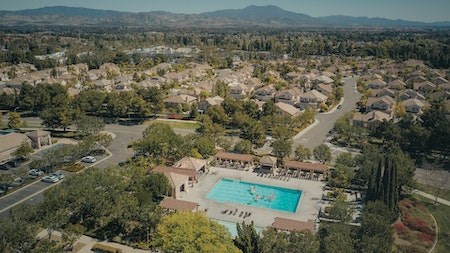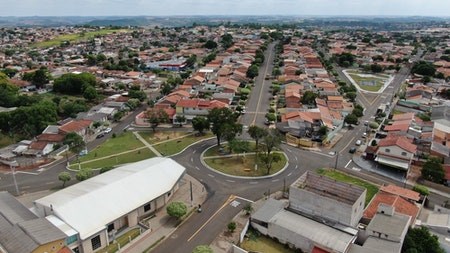According to the PayProp Annual Market Report for 2022, the average rent increased nationally by 3.4% year-on-year from the fourth quarter of 2021 to the fourth quarter of 2022. This amounted to an increase of R268 - to R8 175 - over the 12-month period.
“Rental growth has recovered impressively over the last five quarters since the third quarter of 2021 when year-on-year growth was just 0.2%,” says Johette Smuts, head of data analytics at PayProp. “Rental growth has now recovered to pre-pandemic levels. It is now higher than the 3.2% recorded in the first quarter of 2020.”
Arrears
In the fourth quarter of 2022, just 18.1% of tenants were in arrears. This is significantly lower than the peak of 24.9% in the second quarter of 2020 – just after the national lockdown was first announced.
During 2022, the average amount by which tenants were in arrears as a percentage of one month’s rent also declined during the year. There was a marginal increase again towards the end of 2022, from 77.4% in the third quarter to 78.2% in the last quarter.
However, this was still lower than the pre-lockdown figure of 78.7% recorded in the first quarter of 2020.
Pressure
The report showed that 28.5% of tenants nationwide presented a high risk during the final quarter of 2022. This was an increase of 4% from 24.5% in 2021.
In the same quarter, 18% of tenants had major delinquencies against their names - up 1.2% from the fourth quarter in 2021. The average credit score also worsened slightly over the past year.
“During the last quarter of 2022, tenants across the country spent an average of 46.6% of their net income on debt repayments, including subscriptions such as cell phones. Another 29.1% of income was spent on rent. This leaves tenants with only 24.2% of their income to pay for important items like food and school fees,” says Smuts.
Before the Covid-19 pandemic, the debt-to-income ratio for South African tenants fluctuated between 42% and 48%. The low interest rate cycle of 2020 and 2021 helped bring this ratio down, enabling tenants to save on interest-related repayments. However, as inflation started to rise in mid-2021, interest rates followed suit from November 2021. The debt-to-income ratio breached 48% by the beginning of 2022.
Factors
Smuts says that 2022 brought some good news for the rental industry as well as an ongoing recovery in the market. However, it would be sensible to be aware that affordability challenges could curb a continued recovery in 2023.
“Economic growth is slow, due partly to unreliable electricity supply and interest rate increases - just two of the factors stretching tenants financially. We expect to continue seeing the effects throughout 2023,” says Smuts.
Trends
PayProp deputy chief executive, Michelle Dickens, says that price sensitivity remains top of the agenda for landlords and property managers in 2023.
“This is due to high inflation and steadily rising interest rates. This trend will compound in future years as tenant income growth remains weak.”
Other factors could include:
- Unemployment levels remaining high.
- Interest rates continuing to climb.
- Inflation outpacing rental escalations - particularly utility and municipal expenses.
However, she says astute rental agents will see the opportunities in 2023.
“By providing stellar service to landlords and using proptech to enhance their offering, they can attract the best properties and the most financially secure tenants.”
The two main trends Dickens expects over the next year are that landlords will be affected by a mismatch between rent escalation and inflation, and rising interest rates worsening tenants’ debt-to-income ratio will cause rental escalations to slow.
“The pandemic period had a dramatic effect on rental growth, which briefly turned negative - -0.3% year on year in November 2020,” says Dickens.
“Meanwhile, inflation bottomed out at 2.1% in May 2020. Inflation has fallen back from its high but is still soaring at 7.2%. Rental growth has now recovered to pre-pandemic levels, but even with growth of 3.4% in the fourth quarter of 2022, landlords are still being left behind. Landlords are also feeling the effects of increasing interest rates, while property expenses like levies and municipal charges continue to increase at higher than inflation rates. Continued rental growth escalation could give landlords more breathing room but may be difficult to achieve while tenant affordability is also being squeezed.
“Most landlords are escalating rents at below-inflation rates. However, each interest rate hike has put tenant affordability under increasing pressure as their debt obligations to credit providers increase. The average tenant now spends 46.6% of net income on debt repayments - up from 45.3% in the fourth quarter of 2021. The increasing cost of other essentials has also affected the ability of tenants to pay rent.
“All these factors are putting rents under pressure. In the most recent PayProp State of the Rental Industry Survey, 85% of agents reported ‘moving to a more affordable property’ as one of the top three reasons for tenants relocating. This is a significant increase from the 58% of survey respondents in 2022.”
Writer: Sarah-Jane Meyer




